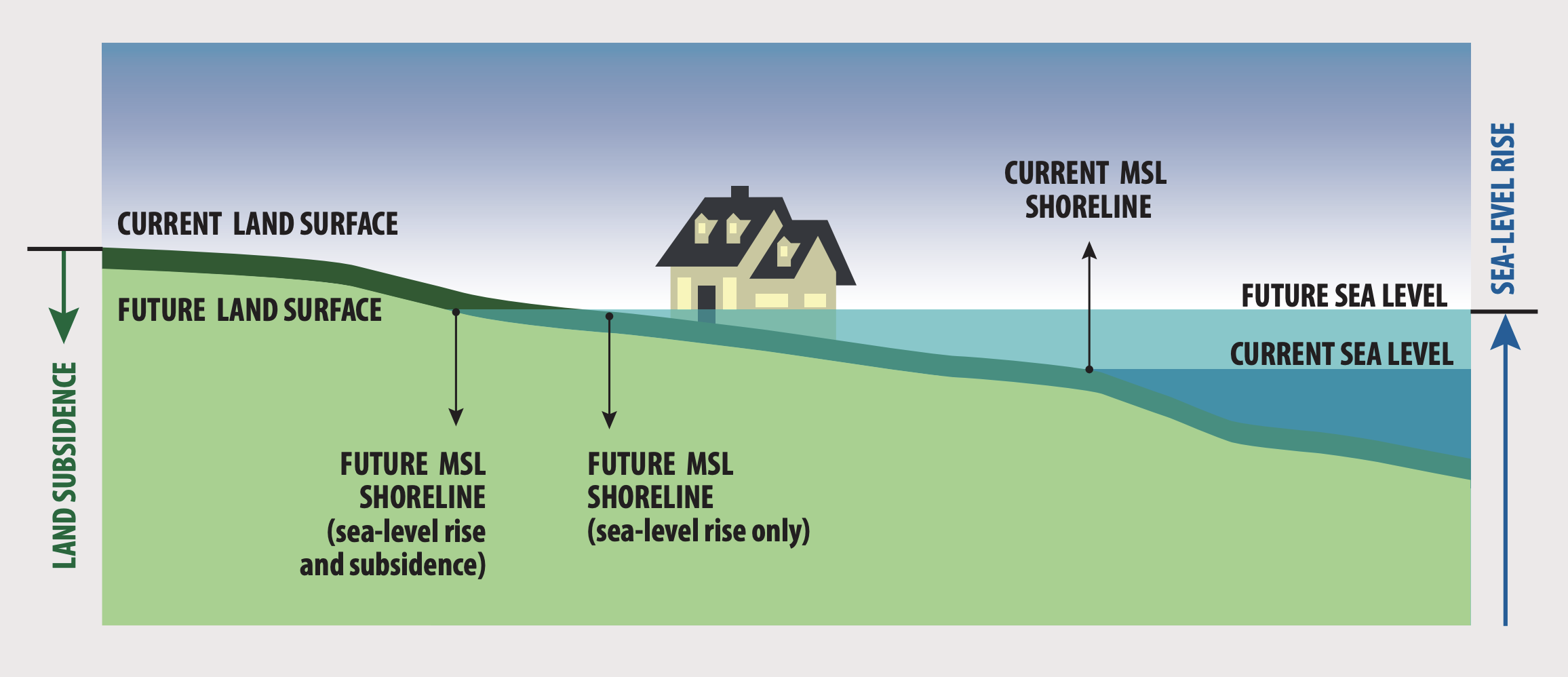Climate change planning: Flood risk - Christchurch regeneration
About sea level rise
From 1880 to 2012, global average temperatures warmed by 0.85ºC, as reported in the Intergovernmental Panel on Climate Change’s Fifth Assessment Report.
The ocean is absorbing 90 per cent of the heat added to the climate system. This warming is causing an expansion of ocean water which, in combination with water from the melting of land-based ice, is causing sea levels to rise.
The global average sea level rose about 19 cm between 1901 and 2010, at an average rate of 1.7 mm per year. From 1993 to 2016 the global average sea level rose at an average rate of about 3.4 mm per year.
Due to the influence of regional climate trends and gravitational effects, sea level does not rise uniformly around the globe. Sea levels in New Zealand rose on average by 1.7 mm per year from 1900 to 2008.
The impacts of climate change on our coast
Much of New Zealand’s urban development and infrastructure is located in coastal areas. This makes it vulnerable to coastal hazards such as coastal erosion, inundation (flooding) by the sea and sea-level rise.
Climate change is likely to bring the following changes:
- increased frequency, duration and extent of coastal flooding
- coastal defences are overtopped by waves or high tides more often
- severe storms increase in intensity and storm surge levels rise
- some sandy beaches may continue to accrete, but more slowly
- some gravel beaches are more likely to erode
- in areas with smaller tidal ranges (eg, Wellington, the Cook Strait area and the East Coast) the historic high tide mark may be exceeded more often
- the potential for saltwater to enter underground freshwater aquifers increases.
Local responses to local changes in sea level
Local sea-level change may be different from the global average, because winds and currents may change and because ice meltwater added to the oceans is not distributed evenly around the world.
If the land is rising or falling, this also changes the sea level in that place. The term relative sealevel change describes the combined movement of both water and land (see image below). That is, even if sea level was constant there could still be changes in relative sea levels – rising land would produce a relative fall in sea level, while sinking land would produce a relative rise in sea level.
Across New Zealand, the average relative sealevel rise for the 100 years up to 2015 was around 1.8 millimetres a year. This rise means that what was an extreme high tide level in 1900 is now reached about twice as often.

